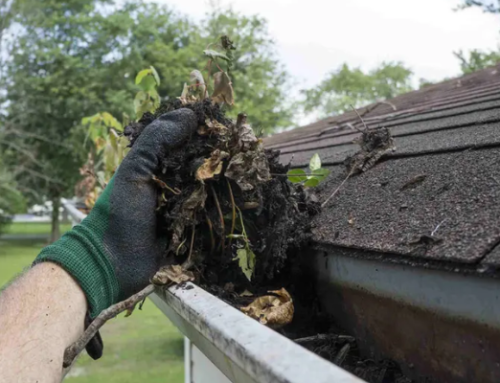The roof of your home is an integral component of the entire structure since it protects your property from wind, snow, and rain while keeping your home insulated as the seasons change. However, a severe storm can damage your roof. Any storm damage to your roof needs to be addressed quickly in order to prevent the condition from getting worse.
Causes Of Roof Damage During Storms

Severe weather is the main cause of a damaged roof. However, storm damage is usually a result of 4 elements: debris, hail, water, and wind.
Debris
Debris such as branches and sticks can get snapped off and blown onto your roof during a thunderstorm. In some cases, a tree or its overhanging branch can fall on your roof, which can result in catastrophic damage. More so, your roof can also be damaged by small twigs, branches, and trash debris that lands on your roof.
Hail
Damage to your roof as a result of hail is not common, but it happens. Small hailstones accompanied by strong winds can cause dents if they hit your roof shingles hard enough. Your shingles’ protective layer may wear off. Your shingles’ edges could also peel off and crack as a result of hail impact.
Water
Extensive rainfall during a storm can cause water or water pooling damage to your roof. Your roof is more at risk of damage if it already has weakened spots or if the drainage system is faulty. Heavy rainfall can easily leak through damaged shingles or even cause sunken spots on your roof. Additionally, clogged gutters will prevent the proper flow of rainwater, allowing it to seep underneath your shingles. This can affect the structural integrity of your roof.
Wind
Wind gusts can cause damage to the shingles of your roof during a thunderstorm. High winds can cause the curling of your shingles or tear them right off. This can expose the protecting underlayment which is beneath your shingles. Your home is more at risk when the underlayment is revealed. Leaks can happen, causing water to seep into your home.
What To Do Next When Your Roof Suffers Storm Damage
Your roof protects your home against external elements. It is your first line of defense. You cannot always predict when damaging weather will hit your home. Nevertheless, you should take action as soon as you suspect that a storm has damaged your roof.
Here are the steps that you should take after storm damage to your roof…
1. Assess The Damage
Conducting a detailed assessment of the damage to your roof is the first step after severe weather. The assessment will be helpful when talking with your contractor or insurance company. It will also help you avoid discrepancies or unforeseen costs. You might need to use a pair of binoculars when trying to identify the damaged areas of your roof. Look for missing shingles, and take note of how severe the damage appears to be. Shingles may be missing randomly. Also, take videos and pictures of the damage if possible.
Additionally, you must record and document all exposed and visible materials. Check for signs that indicate plywood exposure, tarpaper, or missing shingles, noting the approximate shade and color of the materials.
2. Make Temporary Fixes
You must make temporary fixes to avoid further damage to your property after a severe storm. If the damage to your roof is directly over your living space, leaking water can damage the interior of the house. To prevent this type of damage, move valuables away from the affected area and place a garbage can or bucket under the leak. The “strapped tarping method” can be used in case the damage is serious, and you’ll need waterproofing.
3. Call Your Insurance Company
You should contact your insurance company. However, do this only after conducting an assessment of the storm damage. Reaching out to your insurer quickly will help you file a claim. The notes, videos, and pictures you collect during damage assessment should help you get adequate compensation. Your insurer may also send inspectors or assessors to conduct a thorough evaluation of the storm damage to your roof.
4. Contact A Reliable Roof Contractor If Necessary

If you think the best solution to quickly fixing your damaged roof is hiring a contractor, contact a reliable one. You should hire a professional roofing contractor that is certified. Repair companies and roofers in your area may be busy. Some may even offer you discounts or deals if you hire them. Do not fall for such tactics, as they may provide substandard workmanship. Furthermore, you should know that any contractor who is only in your area because of a natural disaster must be avoided. Many of the traveling contractors following storms may provide substandard workmanship since they have no reputation to uphold.
A local, professional roofing contractor will thoroughly assess the storm damage, give an estimation of the repair cost, and repair or replace your roof with absolute professionalism.
Conclusion
You need to take action promptly when there is storm damage to your roof. Your swift response will ensure that the problem does not get worse. The aforementioned steps mentioned here will help guide you on what to do after storm damage to the roof of your home. In Andover, MN, you can call Born Carpentry at 612-747-8003 for a professional roof damage assessment (and for repairs, too).






